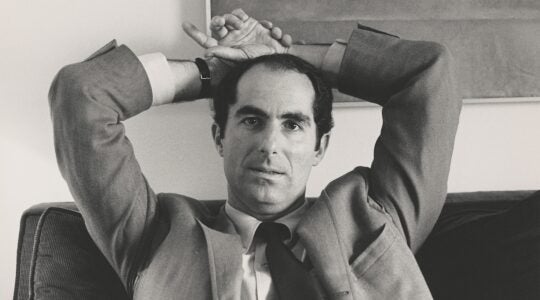At a recent event honoring a well-known rabbi, I was flattered when a prominent member of the Jewish community asked why I had stopped writing essays in The Jewish Week. Frankly, I was surprised that anyone had noticed (and was unduly flattered), but answered, “I just can’t figure out what is going on.” The caustic response was, “That doesn’t stop anyone else from writing.”
Long before the recent Pew Research Center study, I had been writing about the deteriorating state of the American Jewish community. My way of expressing the current state of affairs is that well over half of those we think of as making up American Jewry are not part of the Jewish future. No one likes this, but I think that is the reality.
On the other hand, in the words of the Jewish historian Simon Rawidowicz, we are “the ever-dying people” (but who never seem to die). So the Pew pundits of doom are wrong. Let me explain.
In 1947, my father, popular Jewish Week columnist Rabbi Emanuel Rackman, was asked by the president of Yeshiva University, Rabbi Samuel Belkin, to take a pulpit at a magnificent synagogue in Far Rockaway, Shaaray Tefila. Rabbi Belkin feared that the synagogue would join the Conservative movement, and my father’s assignment was to keep that synagogue in the Orthodox camp. The Conservative movement was booming as Jews were moving to the suburbs and erecting hundreds of synagogues. And the movement was on its way to becoming the largest segment of affiliated Jews. And here we are, three generations later, predicting the demise of the Conservative movement.
In this same time frame of the 1950s through the ’60s, the prediction was being made that the Orthodox would disappear. It didn’t turn out that way, and today the only affiliated segment of American Jewry that is growing is the Orthodox one.
Another example of the difficulty of predicting the Jewish future is the year 1944. Imagine someone prognosticating the ingathering of nearly a majority of world Jewry to (then) Palestine. Yet that is what has happened.
In late May of 1967 most of us in America thought that the three million Jews then living in the State of Israel would be slaughtered. I remember my father pleading with his father to return to the safety of the United States. (He lived half of the year in Israel with my aunt and the other half of the year in New York with my parents.) My grandfather refused to return in spite of all of the dire predictions that preceded the Six-Day War.
One of the more amazing Jewish movements in my lifetime was the Student Struggle for Soviet Jewry of the 1960s and ’70s. I really wonder if those who initially took up the cause really thought they could succeed in intimidating the colossus that was the Soviet Union. Did they really believe that they could win? Yet with a foolhardiness that is an annoying and endearing quality of youth, not only did these students succeed, but almost the entire leadership of Modern Orthodox Jewry was molded and matured by the experience (including Rabbis Shlomo Riskin, Avi Weiss and Irving Greenberg), among other communal leaders. Hopefully, the budding Jewish enterprises that are proliferating at the present time may yield as dynamic a crop of new leaders that will take us places that cannot be predicted.
Knowing that I am probably wrong, though, let me make one prediction. In the late 19th and early 20th centuries, there was a debate between the cultural and political Zionists. The former saw Palestine as a cultural center where great educational institutions such as the Hebrew University (a product of this movement) would be housed — the Achad Ha’am school of thought. Theodore Herzl, though, foresaw an actual return of Jews to their homeland, where a Jewish nation would be founded.
Both views have today prevailed. Back in 1948, American Jewry saw itself as the cultural center of the Jewish people and as its most powerful group, politically. American Jews were the rich uncles of Jewry. Now, cultural and political power has shifted to the Israeli nieces and nephews, and there will be a gradual shift in roles as Israel assumes greater responsibility for world Jewry, including American Jewry.
But of one thing I remain confident: We will always manage to continue transmitting our heritage. For the reality is that by constantly focusing on ever dying, we truly become the never-dying people.
Joseph R. Rackman is a partner in the New York office of the international law firm of Hogan & Lovells LLP.
The New York Jewish Week brings you the stories behind the headlines, keeping you connected to Jewish life in New York. Help sustain the reporting you trust by donating today.




